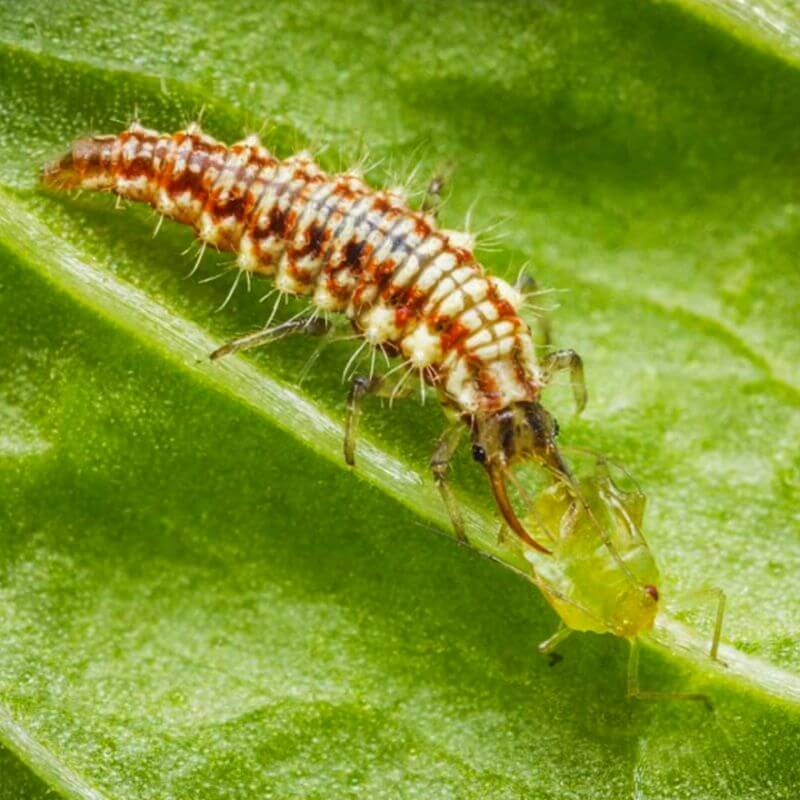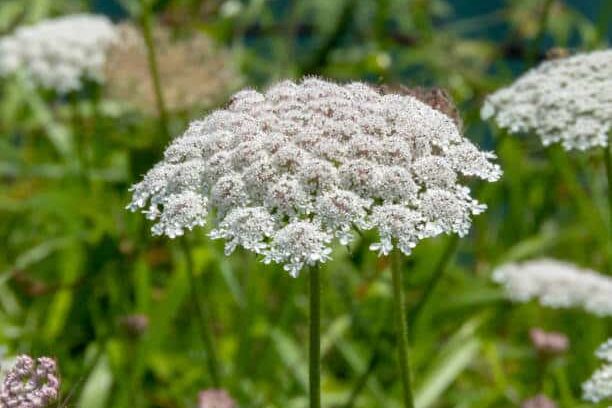In the world of natural predators, ladybugs, as we have discussed above, take all the limelight. But there is a silent heroine that deserves a privileged place in our orchards, and this is the Green Chrysopa (Chrysopa). With its ethereal appearance and lacy wings we should not be fooled, because this predator in its juvenile stage is a real pest-killing machine.
An ecological ally that can transform your crop into a strong, healthy and balanced ecosystem, without a drop of pesticide. Stay and we’ll tell you more about this amazing insect!
A miniature hunting machine
Although adult lacewings feed mainly on pollen, nectar and honeydew, their real fame comes from their larvae. Known as “lions of aphids”, these small, elongated creatures with curved jaws these small, elongated creatures with curved jaws can consume up to 200 prey items per day.

Among their favorite victims are: aphids, mealybugs, mites and thrips. That is, a large part of the insects that most affect our crops.
Unlike other slower predators, lacewing larvae are mobile, aggressive and persistent. They attack quickly and efficiently, literally sucking their prey dry.
Why choose lacewings as predators in your vegetable garden?
Lacewings stand out as one of the most efficient and versatile predators. Unlike other beneficial insects, their larvae do not specialize in a single prey, but feed on a wide variety of common orchard and garden pests, making them an ideal choice for maintaining ecological balance in a comprehensive manner.
One of their greatest advantages is their ability to act quickly after hatching. From their first hours of life, larvae begin hunting and can consume hundreds of prey in a few weeks. This speed is key to stopping pest outbreaks before they spread.
In addition, they adapt well to different climates, being able to reproduce in controlled environments without posing a risk to people, domestic animals or plants. Their low introduction and maintenance costs, together with their predatory efficiency, make them an excellent tool for those who practice ecological or regenerative agriculture.
In short, if you are looking for a silent, tireless and respectful ally for the life of your garden, the green lacewing is a choice that combines efficiency and sustainability.
Keys to keep them in your orchard or garden
If you want lacewings to become natural allies in your garden, it is essential to offer them a welcoming environment. These insects feel comfortable in spaces with abundant vegetation and a certain degree of humidity, so a dry and not very diverse orchard is not usually attractive to them.
One of the first steps to attract them is to cultivate plants that produce pollen and nectar, since, in their adult stage, lacewings feed mainly on these substances. Species such as coriander, cumin, flowering carrot or borage are excellent choices. These not only beautify the space, but also act as natural magnets for these and other beneficial insects.
Another trick is to take advantage of their attraction to light. As they are nocturnal insects, you can leave some soft lights or lanterns on during the night, especially near vegetation or flowers. This will attract their attention and encourage them to stay.
Also, make sure they have adequate shelter. Lacewings highly value spaces where they can rest and lay eggs safely.



But remember, like other beneficial predators, if we do not have food for them in our garden or orchard, lacewings will look elsewhere. That is why it is always good to have some pests under control to feed them in their young stage or to have quality nectar and pollen, all year round, for lacewings in their adult stage. For this reason, we share with you a selection of products that can help you attract them and encourage them to stay in your orchard:
🌱 Cumin seeds
A basic for attracting pollinators and auxiliary fauna useful for natural pest control.
👉 View on Amazon🥕 Carrot seeds
Their flowers attract beneficial wildlife to your garden, helping to promote biodiversity and protect crops.
👉 View on Amazon💡Garden Lights
A basic element to create a pleasant environment and, at the same time, favor the presence of beneficial insects.
👉 View on Amazon


